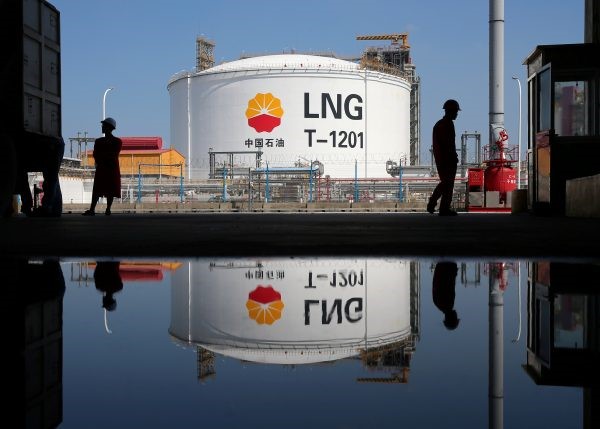发布开云手机在线登陆入口-开云(中国):2018-10-13
11 October 2018
Author:ZhongXiang Zhang, Tianjin University
China is determined to assign the market a decisive role in allocating natural resources. To that end, getting energy prices right is crucial. Since 1984, China has made great efforts to reform energy prices. But such reforms are far from complete.

Before the 1978 economic reforms, China’s economic management structure was modelled principally on that of the former Soviet Union. An essential feature of this system was the adoption of a state-set pricing system. In 1984, the government required state-owned enterprises (SOEs) to sell up to a predetermined quota of goods at state-set prices. SOEs were allowed to sell any goods produced above the quota at prices within a 20 per cent range of the state-set price.
In February 1985, the 20 per cent limit was removed and prices for surplus goods could be negotiated freely between buyers and sellers. At that point, China’s dual pricing system was formally instituted, encouraging a more economically efficient use of resources. This was generally considered a positive and cautious step towards full market pricing.
Domestic crude oil prices have tracked international prices since 1998 but this has not been the case with petroleum products. While China raised its producer prices of gasoline and diesel several times, domestic oil refiners still felt the pinch because crude oil prices were linked directly to international prices.
To address this disconnect, the government implemented a pricing mechanism in May 2009. Domestic petroleum product prices were adjusted upwards if the moving average of international crude oil prices rose by more than 4 per cent within 22 consecutive working days. But this cycle of price adjustments triggered widespread complaints, as it often failed to reflect fluctuations in the international market.
In March 2013, China’s National Development Reform Commission (NDRC) launched a market-oriented petroleum product pricing mechanism to better reflect refiners’ costs and to adapt to fluctuations in global crude oil prices in a timely manner. This automatic pricing mechanism shortens the adjustment period to 10 working days and removes the 4 per cent threshold. The composition of the basket of crudes to which oil prices are linked was also adjusted.
In January 2016, the NDRC specified that no price adjustments would be made if international crude oil prices fell below US$40 a barrel. Confronted with the high costs of domestic production, this floor price is said to maintain domestic production levels close to their current levels. It addresses China’s stagnating domestic oil production and growing hunger for foreign oil.
Under the current pricing mechanism for petroleum products, prices fluctuate with global crude oil prices and decouple from the domestic market. Future reform of China’s petroleum product pricing mechanism should take domestic factors into account so that prices can better reflect the relationship between domestic supply and demand.
Long term, a complete marketisation of petroleum product prices will depend on the extent to which the central government is able to restrain the three national oil corporations that maintain monopoly control over oil imports, exploration, production and pipeline networks.
The natural gas price has long been set below producers’ production costs and does not reflect either the relationship between supply and demand or the prices of alternative fuels. This has not only led to a reluctance on the part of Chinese domestic gas producers to increase investments in production but also constrained the imports of more costly natural gas from overseas.
Prices for more than 80 per cent of natural gas consumption for non-residential use are now determined by the market. Of this figure, more than 50 per cent is entirely set by the market and about 30 per cent is set by a flexible mechanism of reference prices supplemented with fluctuation ranges.
Despite significant progress, more work needs to be done to formulate a fully market-oriented price. This may involve introducing differential pricing policies to reflect seasonal price disparities, off-peak price disparities, interruptive gas prices and gas storage prices.
Further progress in natural gas pricing requires China to reform the whole natural gas industry chain. China could open the natural gas upstream and downstream markets and regulate the midstream pipeline transport market. Market-oriented natural gas prices can only be generated by a competitive natural gas industry structure.
For coal, whether China’s revised coal–electricity price co-movement mechanism will be able to address potential conflicts between coal producers and power generators remains to be seen. It is still very difficult to establish a nationwide coal market as railway freight capacity has not yet been liberalised.
Future reform must consider the entire coal value chain and target those parts that are, to a large extent, still controlled by the government. Even if such reform is undertaken, coal prices will not fully reflect the cost of production because of officially controlled costs and the distorted prices of other production factors. Coal prices also do not include negative externalities.
The imposition of market-based environmental instruments can internalise externality costs in market prices. Indeed, implementing carbon trading not only creates a new impetus for power pricing reforms to allow the pass-through of carbon costs but can also help internalise externality costs in market prices. The bottom line for China is this: attempts at energy price reform over the past four decades have delivered results at times, but are so far incomplete.
ZhongXiang Zhangis the Founding Dean and Distinguished University Professor at the Ma Yinchu School of Economics, Tianjin University.
This article is abridged from ZhongXiang Zhang, ‘Energy price reform in China’ in Ross Garnaut, Ligang Song and Cai Fang (eds.), China’s 40 Years of Reform and Development: 1978–2018, China Update, ANU Press, 2018.
原文链接: